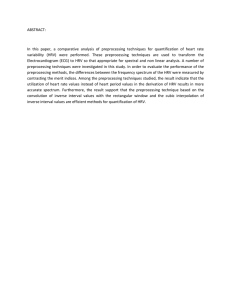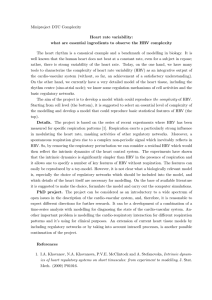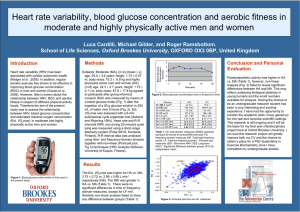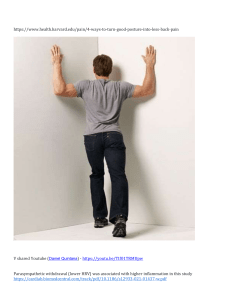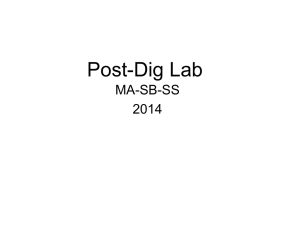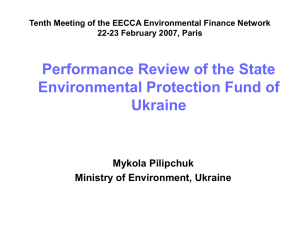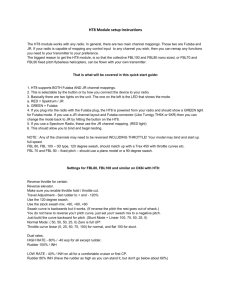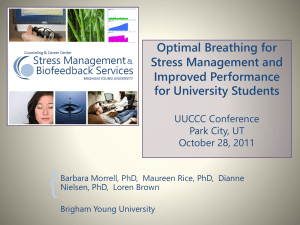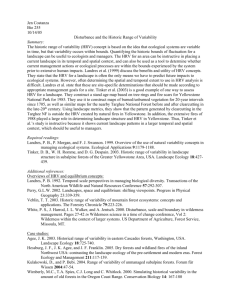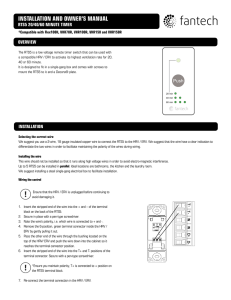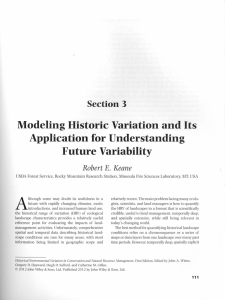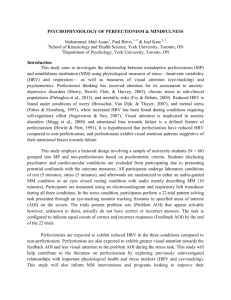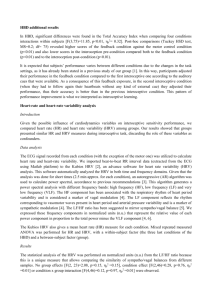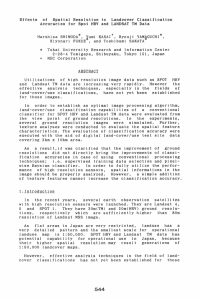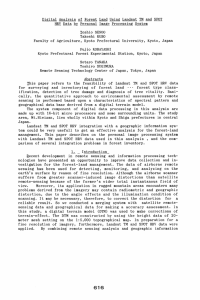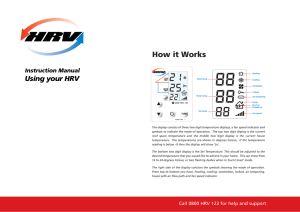ranges pp
advertisement
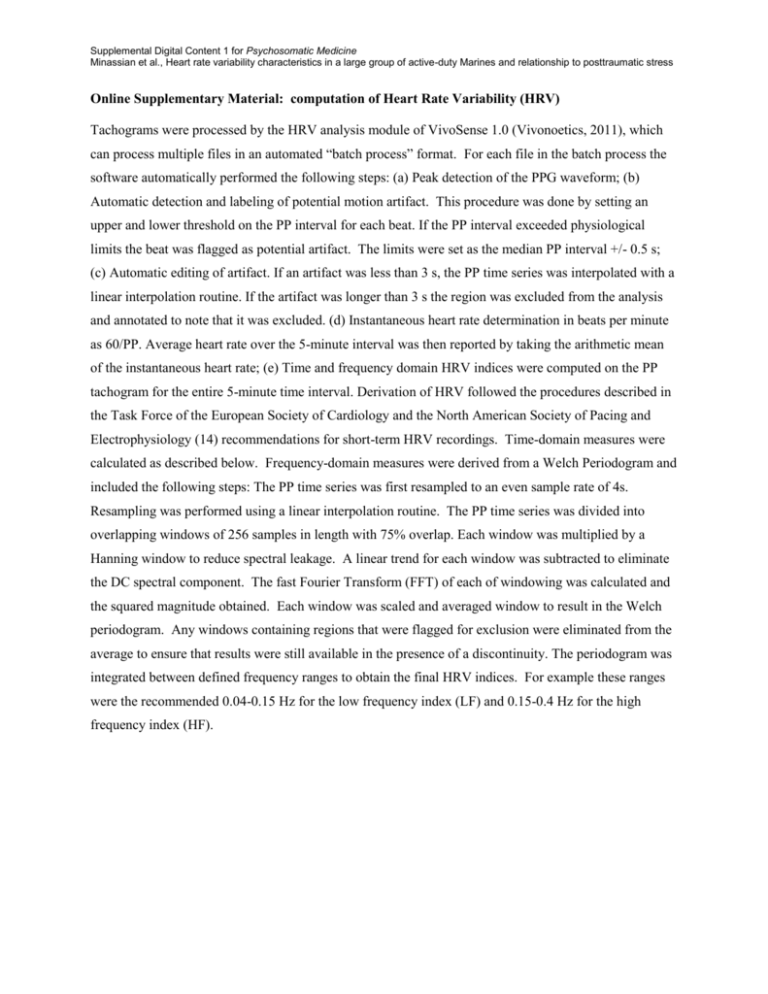
Supplemental Digital Content 1 for Psychosomatic Medicine Minassian et al., Heart rate variability characteristics in a large group of active-duty Marines and relationship to posttraumatic stress Online Supplementary Material: computation of Heart Rate Variability (HRV) Tachograms were processed by the HRV analysis module of VivoSense 1.0 (Vivonoetics, 2011), which can process multiple files in an automated “batch process” format. For each file in the batch process the software automatically performed the following steps: (a) Peak detection of the PPG waveform; (b) Automatic detection and labeling of potential motion artifact. This procedure was done by setting an upper and lower threshold on the PP interval for each beat. If the PP interval exceeded physiological limits the beat was flagged as potential artifact. The limits were set as the median PP interval +/- 0.5 s; (c) Automatic editing of artifact. If an artifact was less than 3 s, the PP time series was interpolated with a linear interpolation routine. If the artifact was longer than 3 s the region was excluded from the analysis and annotated to note that it was excluded. (d) Instantaneous heart rate determination in beats per minute as 60/PP. Average heart rate over the 5-minute interval was then reported by taking the arithmetic mean of the instantaneous heart rate; (e) Time and frequency domain HRV indices were computed on the PP tachogram for the entire 5-minute time interval. Derivation of HRV followed the procedures described in the Task Force of the European Society of Cardiology and the North American Society of Pacing and Electrophysiology (14) recommendations for short-term HRV recordings. Time-domain measures were calculated as described below. Frequency-domain measures were derived from a Welch Periodogram and included the following steps: The PP time series was first resampled to an even sample rate of 4s. Resampling was performed using a linear interpolation routine. The PP time series was divided into overlapping windows of 256 samples in length with 75% overlap. Each window was multiplied by a Hanning window to reduce spectral leakage. A linear trend for each window was subtracted to eliminate the DC spectral component. The fast Fourier Transform (FFT) of each of windowing was calculated and the squared magnitude obtained. Each window was scaled and averaged window to result in the Welch periodogram. Any windows containing regions that were flagged for exclusion were eliminated from the average to ensure that results were still available in the presence of a discontinuity. The periodogram was integrated between defined frequency ranges to obtain the final HRV indices. For example these ranges were the recommended 0.04-0.15 Hz for the low frequency index (LF) and 0.15-0.4 Hz for the high frequency index (HF).
